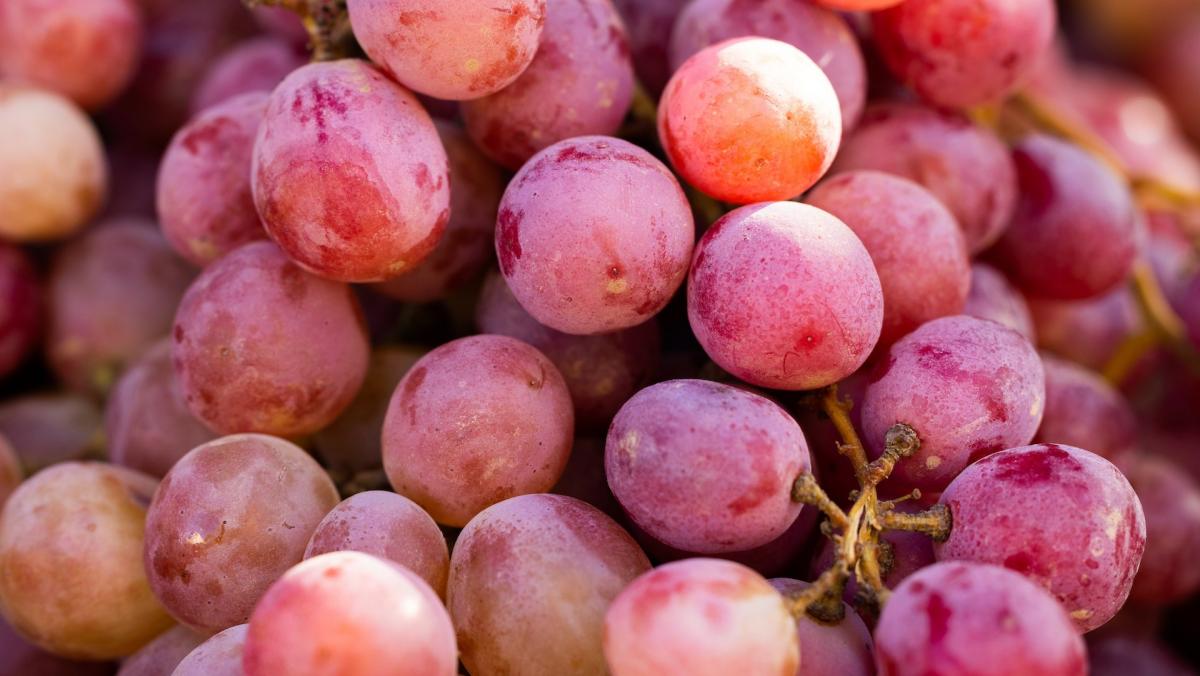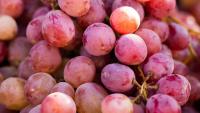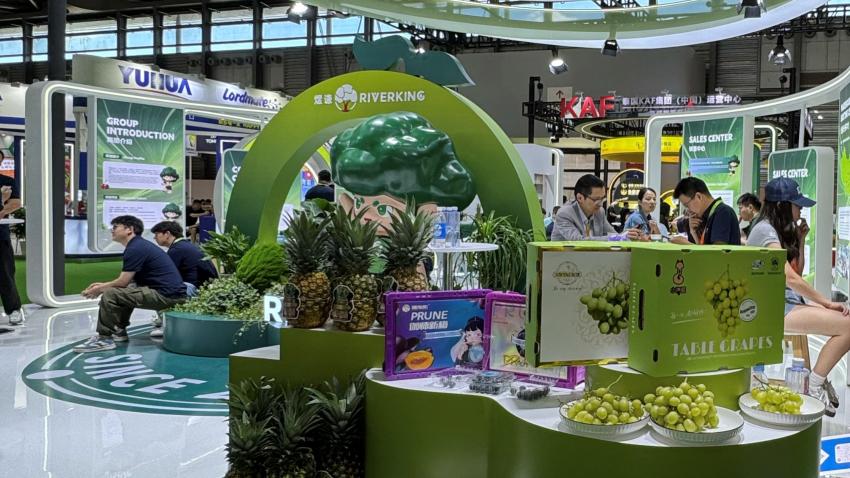You are here
Back to topHigh-End Queen Nina Grapes Hit Chinese Market

High-end Queen Nina grapes grown in Yunnan province have now landed in some boutique supermarkets and wholesale produce markets in China. The early-season Queen Nina grapes on sale in City’super stores are produced in Jianshui and priced at more than 100 Chinese yuan ($13.94) per 400-gram bunch. Meanwhile, the grapes are fetching around 200 yuan ($27.88) per kilogram on the online platform Taobao and more than 80 yuan ($11.15) per kilogram at Beijing’s Xinfadi wholesale market.
According to City’super staff, the supermarket chain has stocked Queen Nina grapes since before 2020. Sales have gradually increased as the product has become more popular with customers, leading to lower prices. Queen Nina grapes currently account for approximately 1% of the premium supermarket chain’s total fruit and vegetable sales.
Queen Nina is a tetraploid hybrid table grape cultivar originally developed in Japan. The grapes are large and bright red, with high sugar content and low acidity. Research and development on the Queen Nina variety, a hybrid of Akitsu-20 and Aki Queen, began in the town of Akitsu in 1992. In 2011, after more than 10 years of cultivation, it was officially registered in accordance with Japan’s Plant Variety Protection and Seed Act under the variety code 20733.
Bunches of Queen Nina grapes weigh approximately 500–700 grams, with individual grapes weighing 15–20 grams. With careful fruit thinning and the judicious application of gibberellic acid during cultivation, it is possible to obtain seedless grapes weighing upward of 17 grams. The grapes feature a soluble solid content of 20–21%, an acid content of 0.4 grams per 100 milliliters and a sugar content as high as 20%. This soluble solid content is considerably higher than that of Kyoho and Pione grapes, while the acidity is much lower. The grapes have a thin skin and a sweet pulp with a flavorful wine scent. Queen Nina grapes typically mature between late August and early September, before Kyoho grapes and slightly later than Pione grapes.
Although Queen Nina grapes were introduced into China around the same time as the Sunshine Rose variety, they have still lagged behind owing to difficult cultivation requirements and restrictions on their introduction from Japan. The rapid adoption of the Sunshine Rose variety has allowed Chinese agricultural technicians to speed up the localization process with the Queen Nina cultivar. According to media reports, it has been possible to solve the problem of difficult color development by careful research and optimization. In places such as Shaanxi, Yunnan and Jiangsu, where the altitude is relatively high, the temperature difference between day and night is large, sunlight is sufficient and rainfall remains low during the ripening period, the cultivation of Queen Nina grapes is continuing to expand, but the total output remains less than 0.1% of that of Sunshine Rose.
The attractive appearance and sweet taste of Queen Nina grapes have made them a very popular variety on the high-end grape market, and the market price has remained high. According to local media reports, one farmer from Changcheng in Shaanxi province said that the local price had reached 140–160 yuan ($19.51–22.30) per kilogram in 2022 and the total value of his 0.67-hectare orchard in its first year exceeded one million yuan ($139,000).
Image: Pexels
This article was translated from Chinese. Read the original article.













Add new comment